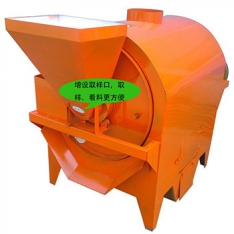What do you know more about the Rapeseed oil?
History
Rapeseed oil is called “rapeseed oil” for short, mainly from the seeds of Brassica napus and Brassica oleifera (oil content 22% – 49%, average 40%). It contains 21% – 27% protein and 1% phospholipid. These varieties of rapeseed are produced in China, India, Japan, Pakistan, Sweden, Poland, Germany, Chile, France, and Canada. In Europe, the source of vegetable oil is winter-sown Brassica napus. In Pakistan and Canada, the main source of vegetable oil is cabbages planted in summer.
Rape production in China has developed greatly in recent years, and the yield per mu has been increasing. The yield of rapeseed oil accounts for more than 1 / 3 of that of vegetable oil. In addition to the Yangtze River and Pearl River basins, other regions are also vigorously developing rape cultivation, because it can use winter fallow land to grow, not compete with field crops.
Rapeseed oil is yellow and green, with an unpleasant smell and spicy taste. After alkali refining, decolorization and deodorization, the rapeseed oil is clear and transparent with light yellow color and no peculiar smell. There is a phenomenon of flavor recovery during storage, but the flavor is different from the original (crude oil).
Ten years ago, rapeseed oil was extracted from cabbage type rapeseed, but now most of the rape planted are cabbage type. After germplasm cultivation, the erucic acid content of many varieties is less than 3%, and there is little “green flavor” in the past. The fatty acid composition of rapeseed from different producing areas is very different, and the fatty acid content of some rapeseed is more than 50%.
Classification
Field pressed rapeseed oil
- From the preparation process, it can be divided into pressed rapeseed oil and extracted rapeseed oil.
- It can be divided into genetically modified rapeseed oil and non genetically modified rapeseed oil according to whether the raw materials are genetically modified or not.
- According to the content of erucic acid, it can be divided into general rapeseed oil and low erucic acid rapeseed oil.
It is usually dark yellow or brown. Rapeseed oil contains 0.4-1.0% arachidic acid, 14-19% oleic acid, 12-24% linoleic acid, 31-55% erucic acid and 1-10% linolenic acid. In terms of nutritional value, the digestibility and absorption rate of rapeseed oil by the human body can be as high as 99%, and it has a cholestatic function. In the pathological state of the liver, rapeseed ketone can also be metabolized by human body. In addition, rapeseed oil contains a small amount of erucic acid and glucosinolates, which are generally considered to be harmful to human growth and development. If it can be used in combination with good edible oil rich in linoleic acid, its nutritional value will be improved.
Nutritional components
The main ingredients are erucic acid, oleic acid, linoleic acid, linolenic acid, tocopherol, and rapeseed sterol.
Production and production
First-grade rapeseed oil
- Cleaning: Before cleaning, first put the rapeseed in the bamboo basket, step on the side mud (mud block) with your feet, and then screen. Remove the ash and sundries lighter than the rapeseed by the windmill. The inclusions are larger than or smaller than the rapeseed was removed by coarse and fine sieves.
- Fry seeds: use a mezzanine pot (two pots can also be used). The mezzanine can be filled with straw ash or fine sand. At the beginning of the frying, the firepower can be slightly larger. After about 0.5 hours, the rapeseed in the pot will burst, that is to say, the firepower should be controlled. Press the fire for 10 minutes before the rapeseed is out of the pot. When the temperature of the rapeseed in the pot reaches 115-120 ℃, it can be out of the pot when it turns golden after being crushed by hand. Stir fry frequently.

- Grinding: the grinding shall be leveled, the grinding center height shall be adjusted, the blanking shall be uniform, the big and small seeds shall be ground separately, and the whole seed shall not be produced during grinding. When grinding seeds, it is necessary to turn over and sweep frequently. When the first slab is to be grooved, add about 3% of the screened bran or about 2% of the 3cm long straw core for mixing. The thickness of the extruded part shall not exceed 0.2cm. After the specified bran or straw core is added, the slab can be streamed directly.
- Steam billet: steam the first billet for about 2 minutes, steam the green steam, steam the second billet for 25 minutes. When steaming, add water to the pot continuously to make up the loss. The steam waist shall be free of air leakage, and the coal-burning shall be even. A layer of Brown should be added to the bottom of the steamer, which can not only protect the bottom of the steamer but also do not stick to the blank. At this time, change the steamer water frequently.
- Cake wrapping and upper pressing: double circles for the first and single circles for the second, spread the cake wrapping and press it in a centralized way. The cake wrapping shall be fast and the cake shall be stepped on tightly. The best way to pack bread is to scatter grass.
- Press: tap gently and frequently. Press the cake quickly, press it gently and frequently after the oil is discharged. After 1 hour, most of the oil is squeezed out, and the pressure is increased by heavy beating and slow beating. The hitting bar should be leveled and straightened, and the upper and lower tips should be even. The first three hours, 90% oil, the second four hours, the next morning. In order to prevent the cold wind from blowing, press with a heat preservation board or sack cover.

